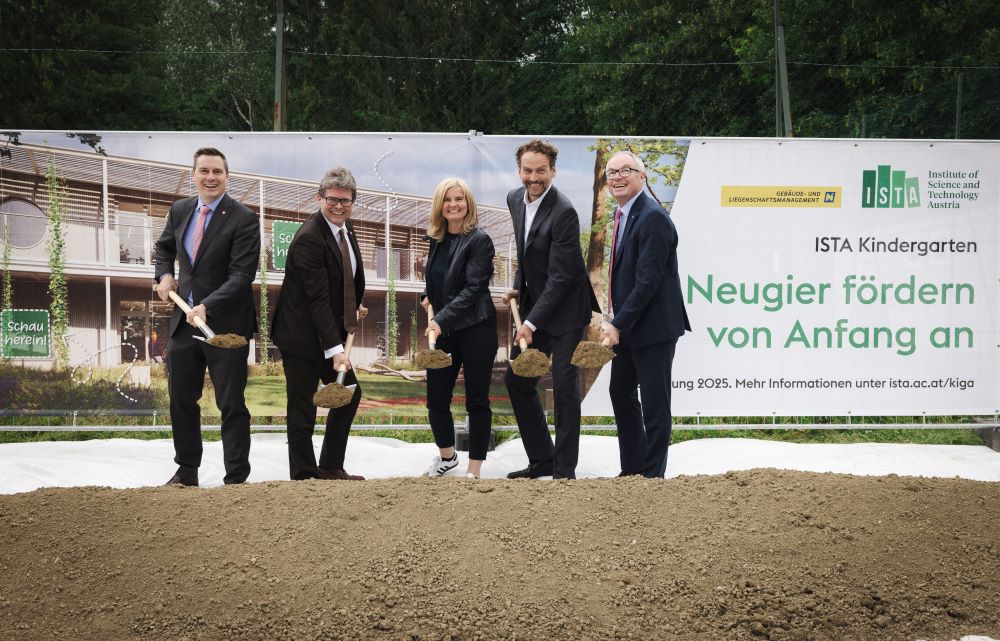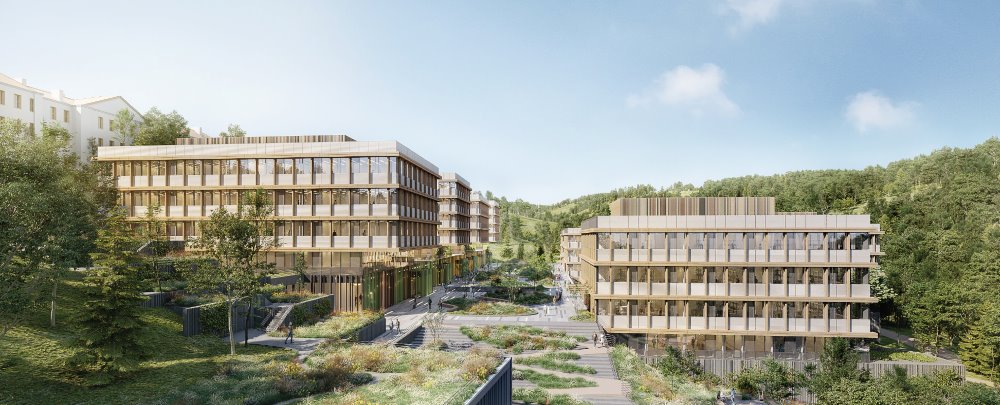May 22, 2024
Nurturing Curiosity From the Start
Ground-breaking new kindergarten and press conference “Masterplan 2036”
The Institute of Science and Technology Austria (ISTA) is growing. The campus is also being further expanded. The Institute’s “Masterplan 2036” construction plans were presented on Tuesday by Federal Minister Martin Polaschek, Governor Johanna Mikl-Leitner, Deputy Governor Stephan Pernkopf, and ISTA President Martin Hetzer. The next three buildings for researchers are due to be completed by 2028. Before then, a new kindergarten will be built on campus, for which the ground-breaking ceremony took place today.

Around 80 research groups are currently conducting research in the natural sciences, mathematics, and computer sciences at ISTA in Klosterneuburg. Over 1,200 researchers and employees from 78 countries are involved. By 2036, with around 150 research groups and over 2,000 employees, the institute should have reached the critical size needed to establish itself permanently in the world class of international basic research. This growth will also require new buildings and infrastructure. The concrete plans for this–the so-called “Masterplan 2036”–have now been presented.
Three new buildings for world-class research by 2028 – five more by 2034

The first construction phase of the “Masterplan” consists primarily of three buildings, which will include laboratories and offices for research groups and administration, as well as an additional cafeteria and a learning center. The new buildings will comprise over 25,000 m2 of usable space and provide room for around 30 research groups and other shared laboratories. Completion is planned for 2028. In two further construction phases, two additional buildings (25,000 m2) will be built by 2031, and another three (10,000 m2) by 2034. All buildings in these three construction phases will extend along a new campus plaza in the northern part of the site.
Information and visits
Up-to-date information on the buildings is provided here. Interested parties will have the opportunity to get to know the existing campus and the Institute in person, for example on May 24 at the Long Night of Research or on June 9 at the ISTA Open Campus.
Ground-breaking ceremony for new campus kindergarten

The new buildings also include a new kindergarten on the ISTA campus, with space for twice as many children’s groups as before. Federal Minister Martin Polaschek, Deputy Governor Stephan Pernkopf, Mayor of Klosterneuburg Christoph Kaufmann, ISTA President Martin Hetzer, and Deputy Managing Director Barbara Abraham broke ground today at 13:00 for the new kindergarten with a spacious outdoor area of 2,300m2.
At a press conference in St. Pölten on Tuesday, Martin Hetzer, President of ISTA, emphasized the importance of the ISTA Campus expansion for Austria as a business location. “As we speak, my colleagues at ISTA are conducting research in over 80 research groups. And the number is constantly growing: every year we welcome between five and eight new, excellent assistant professors or professors at ISTA. For example, the areas of computer science, chemistry, physics, life sciences, and astrophysics are currently growing. With the declared goal of 150 research groups in 2036, we will then reach the critical size to be able to play in the top league of basic research worldwide in the long term–and thus also strengthen Austria as a business location and make it fit for the future. Society and the economy grow particularly well in an environment of excellent science.”



